Text
Global social media: China
The Great Firewall of China essentially refers to China’s censorship of content on traditional and new media. The Great Firewall acts as a barrier, restricting communication and data exchange much as a real wall would. Internet users in China are unable to access Google, Facebook, Twitter, Dropbox, and other international sites, including those belonging to foreign news outlets like the BBC and Reuters (Maags 2019). The situation wasn’t like this prior to Xi Jin Ping’s election as president. Before 2012, the Chinese people reap the benefit from the internet's ability to increase their transparency and empower their communication. Some influential bloggers amassed tens of millions of readers by calling for radical changes in society and politics. Virtual private networks (VPNs) were utilised by Chinese residents to access restricted content online (Bradsher 2012). Citizens gathered online to demand accountability from authorities, filing electronic petitions and planning demonstrations (Economy 2018). Seventy percent of 300 Chinese officials surveyed in 2010 were concerned that their errors or personal information would be made public. So, the question is why did China take censorship to the extreme? To put it bluntly, what are they so afraid of?

Why does China censor everything?
Before any discussion, I would like to mention that censorship does take place in majority of the countries. The press release/ news that we are reading everyday doesn’t have full freedom of speech either. So, my argument presented in this section would be from a neutral stance, seeking to understand the possible reasons of China’s censorship.
The first perspective is that the Chinese government understands that power of social media. Social media has the mobilizing power. Activists, demonstrators, and revolutionaries have frequently utilised social media to mobilise worldwide support for campaigns against a variety of injustices. But just as it is a platform that spreads knowledge and momentum at an unprecedented rate, it also spreads misinformation and conflict (Gilbert 2021). If we look back at the traditional cultural value of China, we will realize that China priorities harmony (Zhang 2013). So, it is understandable that the Chinese government wanting to avoid chaos within the country. The point can be further strengthened by the educational level in China. According to Trip Bitten (2022), only about 240 million Chinese people out of the whole population have received tertiary education. The argument is that tertiary education provides people with critical thinking ability that enables them to discern facts from lies. Even though most Chines did complete the 9 years compulsory education, but they are still susceptible to fake news. In short, we can view censorship as a protective measure from the Chinese government.

The second perspective is ‘tyranny’. The idea is that the Chinese government want to ‘contain’ its people in its own ecosystem to minimize the risk of revolt (online or physical). The strict regulations enacted support this view. The supreme people's court declared in September 2013 that writers of internet articles that purposefully spread rumours or falsehoods and were viewed by more than 5,000 people or shared more than 500 times might face defamation charges and three years in prison (Economy 2018). Besides, there is the social credit system. Under this system, if the Communist Party of China considers a person untrustworthy, the social credit system assigns them a ranking and imposes punishments such as limiting their internet access (slow bandwidth) or preventing them from traveling locally and internationally (Canales 2021). What’s worse is that in recent time stricter rule seems to be considered by the Chinese government. The draft rules posted by the Cyberspace Administration of China in June, which would entail more monitoring of comments that are often overlooked by censors, such as responses to comments and messages shown on the screen while livestreaming (Allen 2022). According to the guidelines, social media sites should also verify all comments before they are published. I am sure those who watch BiliBili know what’s up if this were enacted. Imagine YouTube, but what you write in the comment section are being monitored and restricted. You can argue that this is similar to Twitch’s approach, but knowing China, they would take this a step further by censoring the ‘weirdest’ thing.

So, is it good or bad?
In my opinion, I would say it’s too much oppression from the government. Censoring explicit content is understandable, but ‘sensitive’ issues (which I am referring to controversies, international news) are not okay for me. But in the end, it depends on how an individual views this issue. We will never know the true intention behind what the Chinese government did, but we can have a pretty good guess. To end this blog, I will present a few links to show some case studies relating to the censorship in China
References
Allen, B 2022, ‘New draft rules portend more internet censorship in China’, Axios, 21 June, viewed 8 November 2022, <https://www.axios.com/2022/06/21/china-internet-censorship-comments-social-media>.
Bradsher, K 2012, ‘China toughens its restrictions on use of the internet’, The New York Times, 28 December, viewed 8 November 2022, <https://www.nytimes.com/2012/12/29/world/asia/china-toughens-restrictions-on-internet-use.html>.
Canales, K 2021, ‘China’s ‘social credit’ system ranks citizens and punishes them with throttled internet speeds and flight bans if the Communist Part deems them untrustworthy’, Insider, 25 December, viewed 11 November 2022, <https://www.businessinsider.com/china-social-credit-system-punishments-and-rewards-explained-2018-4>.
Economy, EC 2018, ‘The great firewall of China: Xi Jinping’s internet shutdown’, The Guardian, 29 June, viewed 8 November 2022, <https://www.theguardian.com/news/2018/jun/29/the-great-firewall-of-china-xi-jinpings-internet-shutdown>.
Gilbert, E 2021, ‘The role of social media in protests: mobilising or polarising?’, Initiative, 6 April, viewed 8 November 2022, <https://89initiative.com/the-role-of-social-media-in-protests-mobilising-or-polarising/>.
Maags, C 2019, ‘The great firewall of China’, Fair Observer, 23 September, viewed 8 November 2022, <https://www.fairobserver.com/region/asia_pacific/great-firewall-china-censorship-chinese-news-today-vpn-china-38018/>.
Trip Bitten 2022, Why does China censor everything?, 30 October, viewed 8 November 2022, <https://www.youtube.com/watch?v=0G_63uuBOyA>.
Zhang, LH 2013, ‘China’s traditional cultural values and national identity’, Carnegie Endowment for International Peace, 21 November, viewed 8 November 2022, <https://carnegieendowment.org/2013/11/21/china-s-traditional-cultural-values-and-national-identity-pub-53613>.
2 notes
·
View notes
Text
Social Gaming
What is social gaming? The term hasn’t had a universal definition yet. For the purpose of this discussion, social gaming is regarded as a community multiplayer game area in which the goal of beating the game is secondary to the social component of participating in the game (Reis & Ashmore 2022, p. 11). A few examples of social games are Among Us, Roblox, Minecraft (if you are playing the multiplayer servers) etc. As humans are complex beings, the online communities and interactions ought to have some negative aspects, just like reality. Let’s explore the dark sides of social gaming.
Toxicity
I believe every gamer has experienced unjustified bad attitudes, behaviors, or hostility in multiplayer games before. Why is the supposedly collaborative affordance of social games shifting towards toxicity? Let examine the possible reasons. The concept of toxic gaming culture is premised on the widespread acceptance of deviant behaviors while playing video games, and the tendency to absolve oneself of responsibility for such behavior on the grounds that it is harmless (Kowert 2020, p. 1). From the psychology perspective, social cognitive theory holds that people acquire toxic gaming behaviors via social learning (Nickerson 2022). Games with toxic gamer cultures would perpetuate toxicity. Besides, Theory of Planned Behavior states that context determines an individual's intention to participate in harmful behavior (Brookes 2021). That is, if toxic conduct is tolerated as a group standard and perpetrators are not punished, individuals may behave adversely toward others. Moreover, online disinhibition effect states that when you engage online, people cannot see you and don't know you, which allow individuals to break social norms without fear of penalties (Suler 2004, p. 321). From the perspective of the game itself, the imbalance skill levels, and competitive nature of the game can drive toxic behaviors such as throwing (simply play), sabotaging (team killing), and verbal abuse (Kou 2022).
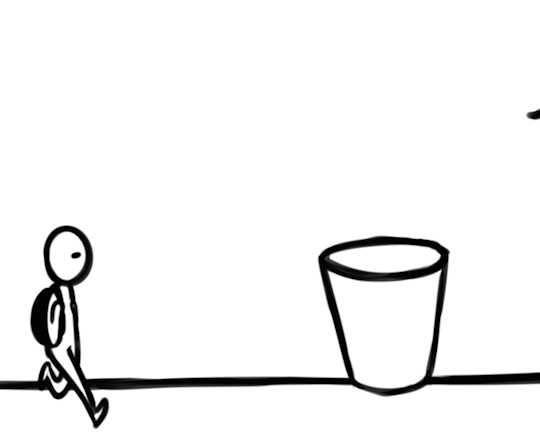
Social displacement
Online video game activity may have harmful social repercussions, particularly for adolescents. As we all know, teenagers have plenty of time to play online video games. This suggests that teens prefer gaming over socializing. Second, as one reaches adolescence, they concentrate on their friends instead of their parents for intimacy and emotional support. Replacing genuine interactions with online ones may be harmful, particularly for youth. This is because many critical social skills are developed during adolescent, such as how to form deep emotional connections and regulate one's behavior in social circumstances (verbal displays). Not to mention, increased time spent playing online video games may negatively affect offline social contact in terms of quantity and quality. This further hinders and exacerbates the development of effective social skills and socially acceptable behavior.
Source: (Kowert et al. 2014, p. 388)

Case examples
I will present several videos illustrating toxicity in the social gaming community.
youtube
youtube
References
Brookes, E 2021, ‘The theory of planned behavior’, Simply Psychology, 22 July, viewed 6 November 2022, <https://www.simplypsychology.org/theory-of-planned-behavior.html>.
Kou, YB 2020, ‘Toxic behaviors in team-based competitive gaming: The case of League of Legends’, In Proceedings of the Annual Symposium of Computer-Human Interaction in Play (CHI PLAY ’20) (ACM), November 2 - November 4, New York, NY, USA, pp. 1-12, viewed 6 November 2022, <https://www.researchgate.net/publication/343696767_Toxic_Behaviors_in_Team-Based_Competitive_Gaming_The_Case_of_League_of_Legends>.
Kowert, R 2020, ‘Dark participation in games’, Frontiers in Psychology, vol. 11, pp. 1-8, viewed 6 November 2022, <https://www.frontiersin.org/articles/10.3389/fpsyg.2020.598947/full>.
Kowert, R, Domahidi, E, Festl, R & Quandt, T 2014, ‘Social gaming, lonely life? The impact of digital game play on adolescents’ social circles’, Computers in Human Behavior, vol. 36, pp. 385-390, viewed 6 November 2022, <https://www.sciencedirect.com/science/article/pii/S074756321400212X?casa_token=7sbmZMxLJsMAAAAA:oNGVfIQqo_OcfyrlfwedlyNz-Difpu4UWaX7AthruZzbxeTM-mO8h9vzhCMSgcRUf8evBrVDKm5U>.
Nickerson, C 2022, ‘Social cognitive theory: how we learn from the behavior of others’, Simply Psychology, 5 May, viewed 6 November 2022, <https://www.simplypsychology.org/social-cognitive-theory.html>.
Reis, AB & Ashmore, M 2022, ‘Form video streaming to virtual reality worlds: an academic, reflective, and creative study on live theatre and performance in the metaverse’, International Journal of Performance Arts and Digital Media, vol. 18, no. 1, pp. 7-28, viewed 6 November 2022, <https://www.tandfonline.com/doi/pdf/10.1080/14794713.2021.2024398?casa_token=TM7xX78EKPEAAAAA:eXwmrhxbbT8_oul-00yh5rXRPm91jwRcaNNzIxMf5I7Jq5qquIMZzE-DXFMA5DgxbZqD5inlZSXMXp4>.
Suler, J 2004, ‘The online disinhibition effect’, Cyberpsychology & Behavior: The Impact of the Internet, Multimedia and Virtual Reality on Behavior and Society, vol. 7, no. 3, pp. 321-326, viewed 6 November 2022, <https://www.researchgate.net/publication/8451443_The_Online_Disinhibition_Effect>.
0 notes
Text
Fandom
Fans and fandom
Fans is defined as “an ardent admirer or enthusiast” on Merriam-Webster dictionary (EOIN 2021). For most of us, we considered ourselves fans of something if we like or support certain individuals or groups to a great extent. When fans of come together, a fandom is formed. Fandom is essentially a group of fans who share a passion for a specific topic or group of people (Euronews 2022). As many young people nowadays are apathy to politics, fandom is one way to drive civic engagement. But before that, let’s explore the psychology behind fans and their behaviour to get a more holistic picture.
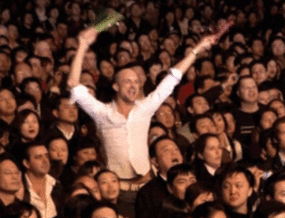
What makes people become fans?
Gao (2021, p. 332) postulated several psychological perspectives to explain fans behaviours. Firstly, he said that identity diffusion (hasn't settled on an identity for themselves or isn't actively shaping one) (Isenhardt et al. 2021) and intimacy needs experienced by youths drove them to target celebrities as their role model. Besides, obsession with para-social connections (one-sided relationship of media consumer's unidirectional communication with a media persona) (Vinney 2021) is suspected to be related to the perceived potential dangers of dating in real life. Secondly, the strong relationship that fans formed within a fandom allows sense of community to be formed. The four elements of sense of community are fulfilled in a fandom i.e., membership (boundaries, emotional safety, sense of belonging, personal investment, common symbol system), influence (bidirectional), integration and fulfilment of needs, and shared emotional connection (Mcmillan & Chavis 1986, p. 15). Lastly, the emergence of new media (internet) and its participatory nature also empowered people to express their views and opinions with more liberty.
Fandom and rationale behind fan activism
An expression of civic engagement and political activity born out of fandom experiences is known as "fan activism" (Kligler-Vilenchik et al. 2012). It is logical that public actions such as protest require unity from people. So, what drives that unity? First, let’s talk about influence of celebrity. Social media facilitates more personal interactions between a celebrity and their admirers, which in turn may increase the likelihood that the public will support a celebrity's political agenda (Bennett 2012). Hence, we can consider social media as providing a venue where fans may access, debate, and interact with other like-minded people on subjects they care about, establishing networked publics, serving as the digital equivalent of the physical publics which is dwindling since Covid-19 (Click, Lee & Holladay 2015, p. 603). In short, fandom effectively combines the shared media experiences and feeling of community that are central to fandom and augments the realms of volunteering and activism (Omoto & Packard 2016, p. 272).

The power of fandom and fan activism
Following a confrontation with the federal government, the renowned superhero, Superman renounces his American citizenship in Action Comics' 900th issue. In fact, Superman challenges his own guiding principles, saying that "truth, justice, and the American way...not it's enough anymore." (McKay 2016). One of the Fox news readers criticize the longevity of America as a nation in response. Below is the article:
Comment as such points to the common understanding that people's conceptions of national identity may be shaped by popular mythologies.

Another illustration would be the BTS donation on Black Lives Matter. Following, BTS, Big Hit Entertainment donation of $1 million on June 5 for Black Lives Matter, the BTS supporters launched a hashtag #MatchAMillion effort to equal the donation within 25 hours after the news broke (Bhandari 2020). From the charity perspective, fandom has a competitive nature, where perhaps fans want their idols to sell the most tickets, streaming, and views. This process of gamification has led to philanthropic efforts by many to outperform their ‘rivals’ (Bruner 2020).

References
Bennett, L 2012, ‘Fan activism for social mobilization: a critical review of the literature’, Transformative Works and Cultures, 15 June, viewed 29 October 2022, <https://journal.transformativeworks.org/index.php/twc/article/view/346/277>.
Bhandari, A 2020, ‘The mobilizing power of the BTS army’, Reuters Graphics, 14 July, viewed 29 October 2022, <https://graphics.reuters.com/GLOBAL-RACE/BTS-FANS/nmopajgmxva/>.
Bruner, R 2020, ‘How K-pop fans actually work as a force for political activism in 2020’, Time, 25 June, viewed 29 October 2022, <https://time.com/5866955/k-pop-political/>.
Click, MA, Lee, HJ & Holladay, HW 2015, ‘‘You’re born to be brave’: Lady Gaga’s use of social media to inspire fans’ political awareness’, International Journal of Cultural Studies, vol. 20, no. 6, pp. 603-619, viewed 29 October 2022, <https://www.researchgate.net/publication/282803005_'You're_born_to_be_brave'_Lady_Gaga's_use_of_social_media_to_inspire_fans'_political_awareness>.
EOIN 2021, ‘What does it mean to be a fan?’, Zazzle, 4 May, viewed 29 October 2022, <https://www.zazzle.com/ideas/lifestyle/what-does-it-mean-to-be-a-fan>.
Euronews 2022, ‘What is fandom? And is it bad for you?’, Euronews.culture, 20 September, viewed 29 October 2022, <https://www.euronews.com/culture/2022/08/04/what-is-fandom-and-is-it-bad-for-you>.
Gao, YJ 2021, ‘Motivation of fan behaviour under the influence of psychology and new media’, Advances in Social Science, Education and Humanities Research, vol. 634, pp. 332-335, viewed 29 October 2022, <https://www.atlantis-press.com/proceedings/cdsd-21/125969264>.
Isenhardt, A, Kamenowski, M, Manzoni, P, Haymoz, S, Jacot, C & Baier, D 2021, ‘Identity diffusion and extremist attitudes in adolescence’, Frontiers in Psychology, vol. 12, pp. 1-11, viewed 29 October 2022, <https://www.ncbi.nlm.nih.gov/pmc/articles/PMC8505980/pdf/fpsyg-12-711466.pdf>.
Kligler-Vilenchik, N, McVeigh-Schultz, J, Weitbrecht, C & Tokuhama, C 2012, ‘Experiencing fan activism: understanding the power of fan activist organizations through members’ narratives’, Transformative Works and Cultures, vol. 10, pp. 1-22, viewed 29 October 2022, <https://www.researchgate.net/publication/259823285_Experiencing_fan_activism_Understanding_the_power_of_fan_activist_organizations_through_members'_narratives>.
McKay, H 2016, ‘Superman renounces his U.S. citizenship in 900th issue of action comics’, Fox News, 8 April, viewed 29 October 2022, <https://www.foxnews.com/entertainment/superman-renounces-his-u-s-citizenship-in-900th-issue-of-action-comics>.
Mcmillan, DW & Chavis, D 1986, ‘Sense of community: a definition and theory’, Journal of Community Psychology, vol. 14, no. 1, pp. 6-23, viewed 29 October 2022, <https://www.researchgate.net/publication/235356904_Sense_of_Community_A_Definition_and_Theory>.
Omoto, AM & Packard, CD 2016, ‘The power of connections: psychological sense of community as a predictor of volunteerism’, The Journal of Social Psychology, vol. 156, no. 3, pp. 272-290, viewed 29 October 2022, <https://pubmed.ncbi.nlm.nih.gov/27064179/>.
Vinney, C 2021, ‘What is a parasocial relationship?’, Very Well Mind, 22 December, viewed 29 October 2022, <https://www.verywellmind.com/what-is-a-parasocial-relationship-5210770>.
0 notes
Text
Crowdsourcing
The term "crowdsourcing" refers to the practice of soliciting contributions from a large number of individuals using digital mediums such as the Internet, social networking sites, and mobile applications (Hargrave 2022). A quick example would be Waze, a navigating app developed by Google. Waze encourages drivers to report accidents and other road occurrences themselves so that all users always have the most up-to-date information (Chang 2018).
Value of social media crowdsourcing
1. Since crowdsourcing engages the public in which it seeks inputs and ideas, it is both communal and competitive. Crowdsourcing could, therefore, lead to the formation of a fandom or media coverage for a product or service (Livescault n.d.). This is essentially buzz marketing, where the purpose is to increase the amount of positive word-of-mouth that may be generated for a certain campaign or products (Caveney 2020). Conversations like this may take place either online or in person and may dramatically boost website visits, social media followers, and, of course, potential customers.
An excellent example is Lego. In recent years, to develop new products and novel storylines, Lego had launched a site called Lego World Builder where it allows fans to propose new characters, shows, story world, design and literally any ideas (@GoldenNinja3000 2021). To further facilitate ideation communication, Lego has a discord channel specifically for Lego World Builder. For those chosen ideas (10,000 votes to qualifies), the creators get 1% royalty on the revenue (Mike 2020).
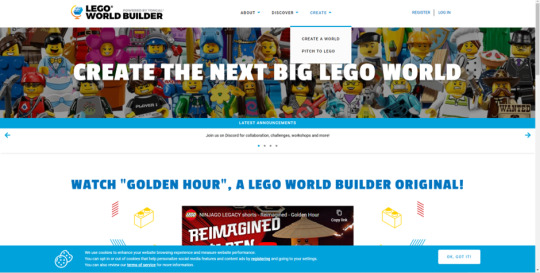

2. Next, we all know that each consumers have their own specific needs. Consumers data are crucial in the sense that it allows businesses to personalize communication and pitch the right products to consumers (Barker 2019). Wouldn’t it be great if business can have another FREE source to collect consumer information besides conducting marketing research. Yes, that is crowdsourcing. Starbuck’s My Starbucks Idea platforms is a great example. This platform didn’t merely invite consumers and enthusiasts to express their thoughts and recommendations for improving the company's beverages, but it also went beyond, creating fandom, communities, discussion threads, which ultimately drove customers loyalty (HBStudent2016 2015).
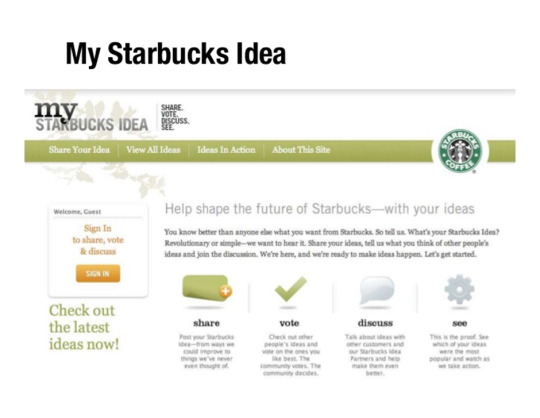
From this above we can see that to participate in this platform, users must sign up. Subsequently, demographics information, emails, and perhaps telephone number could be obtained in the process. The information could help Starbucks with their targeting, knowing which mediums to reach consumers and most importantly, the customers’ preferences (Zote 2019).
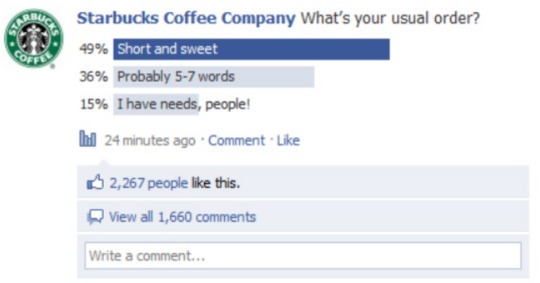
Even a simple poll like above can also provide great insight into customers preferences!
The pitfall of social media crowdsourcing
The first downside of crowdsourcing is the confidentiality issue. In order to obtain relevant and meaningful answers/ solutions from the general public, the company needs to disclose certain sensitive information. Confidential information has a risk of putting company at competitive disadvantage, and diminished brand value and reputation if it leads to negative press (Ries 2021). Secondly, there is also the risk of manipulation by competitors. Unless proper crowdsourcing platforms are utilized, or the communities that are providing ideas or feedback could be untrustworthy. For instance, if a company raises a poll on social media such as Instagram, competitors can always buy votes to influence the results (Thieringer 2022). There is a ton of website where one can buy votes on Instagram story poll. Here a link to the full article:
Lastly, there is the issue of intellectual property rights and plagiarism. Ideas contributed by the publics can sometimes be owned by other parties already, so it is important to verify the prospective ideas with the help legal experts. Not to mention, clear agreement articulating the terms and conditions between the idea provider and the idea seeker needs to be present to avoid any infringement.
Source: (Bakire n.d.)
To wrap up, here are some more examples of brands utilizing crowdsourcing on social media:
References
@GoldenNinja3000 2021, ‘How does Lego crowdsourcing work? @GoldenNinja3000 talks us through his Ninjago success story’, Talks For Teens, 29 June, viewed 18 October 2022, <https://www.talksforteens.com/tech/how-does-lego-crowdsourcing-work-goldenninja3000-talks-us-through-his-ninjago-success-story>.
Bakire, H n.d., ‘The top 5 crowdsourcing advantages and disadvantages’, Herox, n.d., viewed 18 October 2022, <https://www.herox.com/blog/972-the-top-5-crowdsourcing-advantages-and-disadvantag>.
Barker, S 2019, ‘Why consumer data matters so much for your business’, Medium, 6 February, viewed 18 October 2022, <https://blog.markgrowth.com/why-customer-data-matters-so-much-for-your-business-2d6f072f16c6>.
Caveney, L 2020, ‘What is buzz marketing? Strategies and examples’, Influential, 17 February, viewed 17 October 2022, <https://www.thisisinfluential.com/blog/strategy/what-is-buzz-marketing-strategies-and-examples/>.
Chang, L 2018, ‘Love Waze’s incident reporting feature? Lucky you, it’s coming to Google Maps’, Digital Trends, 1 July, viewed 18 October 2022, <https://www.digitaltrends.com/cars/waze-google-maps-incident-report/>.
Hargrave, M 2022, ‘Crowdsourcing: definition, how it works, types, and examples’, Investopedia, 12 September, viewed 18 October 2022, <https://www.investopedia.com/terms/c/crowdsourcing.asp#:~:text=Crowdsourcing%20involves%20obtaining%20work%2C%20information,others%20perform%20small%20tasks%20voluntarily.>.
HBStudent2016 2015, ‘My Starbucks Idea: crowdsourcing for customer satisfaction and innovation’, Digital Innovation and Transformation MBA Student Perspectives, 31 October, viewed 18 October 2022, <https://d3.harvard.edu/platform-digit/submission/my-starbucks-idea-crowdsourcing-for-customer-satisfaction-and-innovation/>.
Livescault, J n.d., ‘6 great advantages of crowdsourcing you can benefit from’, Braineet, n.d., viewed 18 October 2022, <https://www.braineet.com/blog/crowdsourcing-benefits>.
Mike 2020, ‘Lego innovation is a great example of crowdsourcing’, Digital Spark Marketing, 29 December, viewed 18 October 2022, <https://digitalsparkmarketing.com/lego-innovation/>.
Ries, A 2021, ‘Top four damaging consequences of data leakage’, ZeroFox, 3 June, viewed 18 October 2022, <https://www.zerofox.com/blog/damaging-consequences-data-leakage/>.
Thieringer, J 2022, ‘What is crowdsourcing? Definition, advantages & tips’, ISPO.com, 26 August, viewed 18 October 2022, <https://www.ispo.com/en/markets/what-crowdsourcing-definition-advantages-tips>.
Zote, J 2019, ‘How to use social media crowdsourcing effectively’, Sprout Blog, 13 November, viewed 18 October 2022, <https://sproutsocial.com/insights/social-media-crowdsourcing/>.
0 notes
Text
Public health campaigns & communities: what role does social media play?
What is public health campaign? According to Encyclopedia.com (n.d.), it is defined as an endeavor to encourage a specific group of public to commit in behaviors that improve health or avoid unhealthy behaviors. Today I will be exploring how does social media influence public health campaigns. This brings us to the concept of networked public sphere. This phrase refers to the emergence of a variety of behaviors, organizations, and technologies due to networked communication and creation of new ‘space’ for public conversation, political debate, and mobilization (Yang et al. 2021, p. 148). Social media offers the space for individuals to choose who they interact with, therefore, lead to the formation of communities that offer sociability. These communities essentially become the ‘echo chambers’ for public health issues and prompt collaborative actions and further information sharing (Marwick & Boyd 2010, p. 114). Next, we look at the positives and negatives social media brings to public health campaigns.
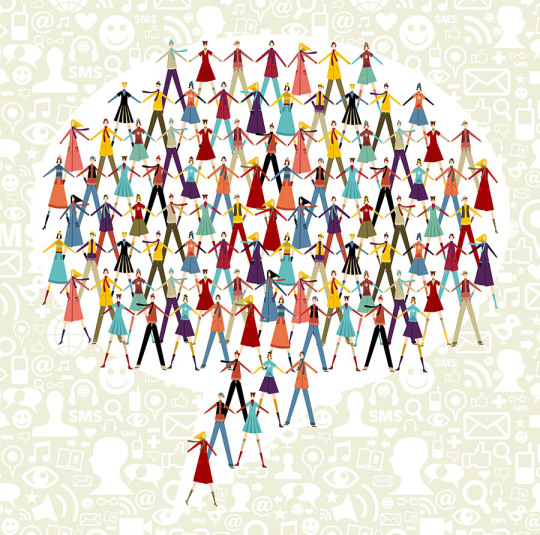
Positives
Research of Jiang et al. (2022) found that engagement and participation of public health campaign can be driven by celebrities where commenting, liking and hastagging lead to the formulation of clusters of fandoms revolving around a health issue. A good example is the #national mask campaign in China.

Public health campaigns commonly attempt to tap into the emotional realm and evoke new ways of thinking for the targeted people. Social media can help to remove barriers that can lead to positive behavioural change. For instance, social media can remind people of unhealth norms, provide hotline for support, associate positive outcomes in relation to ceasing a behaviour etc. (Wakefield, Loken & Hornik 2010, p. 1263).
Public health message on social media is like a seedling. It can grow within an individual’s social network. The repetitive nature of social media message increases the exposure of individuals to an issue and since mass media campaigns could reach many people, it is possible for people to be influenced by the campaign's goals even if they never see the ads themselves or aren't initially convinced by the message. (Wakefield, Loken & Hornik 2010, p. 1263).

Mass media campaigns may encourage public debate of health concerns and ultimately to legislative changes, which restrain individual behavior. A campaign discouraging smoking because of second-hand effects on non-smokers may not convince smokers to stop, but it may raise public support for a policy that prohibits smoking in specified locations, which may encourage smokers to quit. (Wakefield, Loken & Hornik 2010, p. 1263).
Negatives
Social media influences can cause their followers to pursue a ‘standard of beauty’ which could lead to harmful actions to oneself. This is known as body dysmorphic disorder (BDD) where plastic surgery is increasingly undertaken by both sexes as a means to change one's appearance to match that of a filter on a smartphone app or a role model on social media (Gorbis 2019).
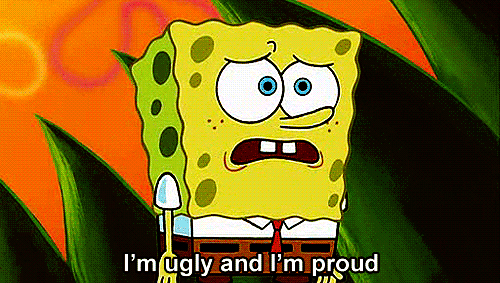
Social media platforms are run by algorithms. Content-prioritization algorithms may have unanticipated negative impacts. Someone looking for pages on a social media site about a harmful issue (e.g., anorexia) may get the most seen or followed accounts rather than ones that might assist. A user who follows a recommended account (e.g., proanorexic) may be provided linked accounts and ads, possibly overwhelming their account with harmful material (Abroms 2019, p. s130).

Final thought
Social media is a great way to promote public health campaigns due to the reverberating nature of the virtual space. However, cautions must be taken because potential detrimental downfalls discussed above. I will end this discussion by providing some successful health campaigns that utilize social media. Please visit the link below:
References
Abroms, LC 2019, ‘Public health in the era of social media’, American Journal of Public Health, vol. 109, no. suppl 2, pp. S130-S131, viewed 10 October 2022, <https://www.ncbi.nlm.nih.gov/pmc/articles/PMC6383968/#__ffn_sectitle>.
Encyclopedia.com n.d., Public health campaigns, Encyclopedia.com, viewed 10 October 2022, <https://www.encyclopedia.com/media/encyclopedias-almanacs-transcripts-and-maps/public-health-campaigns>.
Gorbis, E 2019, ‘Does media induce individuals with body dysmorphic order (BDD) to have plastic surgery’, ADAA, 11 December, viewed 10 October 2022, <https://adaa.org/learn-from-us/from-the-experts/blog-posts/consumer/does-media-induce-individuals-body-dysmorphic>.
Jiang, QL, Liu, SY, Hu, Y & Xu, J 2022, ‘Social media for health campaign and solidarity among Chinese fandom public during the covid-19 pandemic’, Frontiers in Psychology, 19 January, viewed 10 October 2022, <https://www.frontiersin.org/articles/10.3389/fpsyg.2021.824377/full>.
Marwick, AE & Boyd, D 2010, ‘I tweet honestly, I tweet passionately: Twitter users, context collapse and the imagined audience’, New Media & Society, vol. 13, no. 1, pp. 114-133, <https://journals.sagepub.com/doi/10.1177/1461444810365313>.
Wakefield, MA, Loken, B & Hornik, RC 2010, ‘Use of mass media campaigns to change the health behaviours’, National Institutes of Health, vol. 376, no. 9748, pp. 1261-1271, viewed 10 October 2022, <https://www.ncbi.nlm.nih.gov/pmc/articles/PMC4248563/pdf/nihms643749.pdf>.
Yang, AM, Choi, IM, Abeliuk, A & Saffer, A 2021, ‘The influence of interdependence in networked publics spheres: How community-level interactions affect the evolution of topics in online discourse’, Journal of Computer-Mediated Communication, vol. 26, no. 3, pp. 148-166, viewed 10 October 2022, <https://academic.oup.com/jcmc/article/26/3/148/6274960>.
0 notes
Text
Digital citizenship: activism & protest
Usually when we talk about social media, the first thing people would think of is photos, reels etc., those entertainment stuff right? But do you know that social media is actually being used to prompt political movements as well? Let’s explore how and why it was done.
Digital citizenship and its importance
Before we dive into all that political stuff, I want to talk a lil bout digital citizenship. Anyone who utilizes computers, the Internet, or other digital devices to interact with society on any level, in a responsible manner, is considered to be practicing digital citizenship (Zook 2022). Basically, we can understand it as people who use the internet. Majority of us are digital citizens, more so ever since the Covid-19 pandemic. The reason I brough up digital citizenship is because it is intertwined with social media activism. Social media activism refers to the creation of ‘space’ (or we can think of it as public sphere) for organization, groups, and citizens to pursue justice through the utilization of social media to elevate opinions and stories, raise awareness and build relationships (Maryville n.d.). Digital citizenship is vital and should be fostered as it educates young folks how to use technology responsibly to avoid online dangers and advocate for human rights online, such as confidentiality security, and liberty (USIDHR 2022). With more news and media sources, fraud, misinformation, and disinformation increase hence, vital to being able to differentiate reputable sources from its counterparts. The idea is that for activism to be successful, we (the supporters) need to know which information to believe. The next section explore scenarios where social media is used to promote activism.
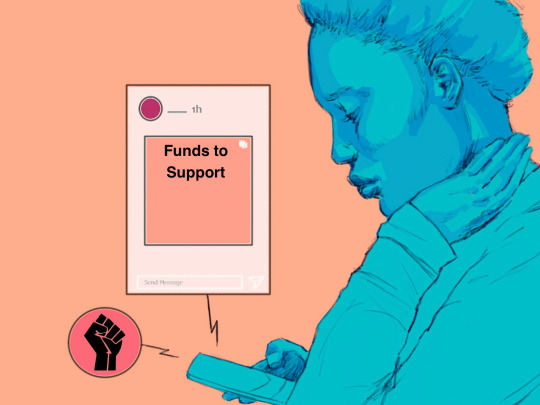
Social media activism cases
In 2014, there was famous trend on social media, especially Facebook. YES, you guess it. It’s the Ice Bucket Challenge where people post videos (on Facebook) of themselves pouring ice water over their heads and then nominate someone else to perform the same deed within 24 hours (Kennedy 2019). The purpose of this challenge was to raise awareness to fight the ALS disease, Amyotrophic Lateral Sclerosis. With more people getting nominated and taking on the challenge, the information is being circulated and spread more. The ice bucket challenge was a huge social media movement success with more than 17 million participations globally and 2.5 million participants from those donated an aggregated $110million for the ALS Association (Trejos 2017).

Another famous activism case would be the #BlackLivesMatter on social media. In 2020, Black Lives Matter propaganda flooded social media. Hashtags like #BlackLivesMatter and #BlackOutTuesday were popular on social media, and tweets about demonstrations and petitions were incessant. How it all began? The #BlackLivesMatter hashtag was used first in 2013 to raise awareness of racism against the black when George Zimmerman was acquitted for killing Trayvon Martin (Gawthrop & Illingworth 2022). The killing of another black teenager, Michael Brown, in the following year made the public believe that police violence against black people is a recurring problem in America that is frequently disregarded. The #BlackLivesMatter campaign blew up when the officer who killed Brown was deemed innocent by the court. The hashtag appeared more than 1.7 million times on Twitter in mere 3 weeks (Santoro 2020). These hashtags were used to demonstrate support with the BLM movement and educate people about racism (Evans 2020). Social media was utilized to alert people about BLM demonstrations and petitions to reform police brutality policy. Millions of petition signatures and contributions to BLM campaigns funded legal counsel and bail for many jailed protestors, as well as inquiries into the killings of other African Americans killed by police violence (Blackwell-Pal 2020). Finally, social media has helped spread the ‘defund the cops’ campaign massively. This movement promotes tackling police violence by cutting police budget and diverting that money into education and housing (Balsamo 2020).

Social media: great medium for activism, why?
In the physical realm, the words of professionals, celebrities, leaders, famous athletes hold great weight. But, what about those who don’t posses a title or power. Naturally, their words are less credible. On social media, everybody is ‘equal’ in the sense that if what they say matters and relatable to the majority, they can gain attention very quickly (Khiry 2020). I am sure we are all no strangers to account on Instagram that post random positive quotes and gain tons of followers. The owner could be just a little kid. That’s the power of social media. Social media activism can be started by anyone, not like physical activism, there usually needs to be a leader or some sort of advocates. Besides, social media provide great accessibility in the sense that everybody, wherever and whenever can be a part of the conversation and this is excellent for people who are busy or disabled.
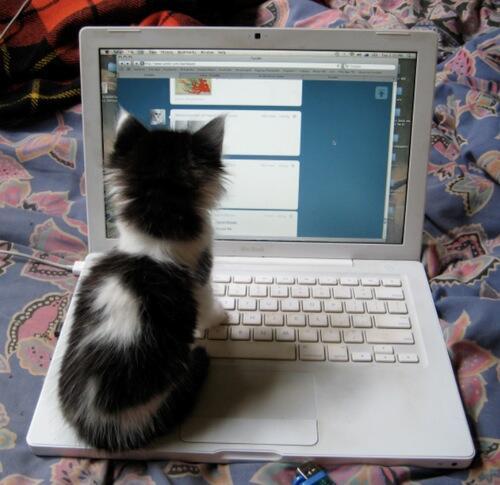
Final thought
In conclusion, while social media is a great tool for activism, users like us need to take note of some potential downfalls. Overexposure to social media movements may desensitize one’s passion regarding issues due to its passiveness (Gervais 2021). Also, we usually tend to jump to conclusion when we still don’t get the full picture (Matherly 2021). This may create confirmation and anchoring biases within us and lead us to lean towards a particular side (which could be bad side) (MasterClass 2021). With misinformation becoming more serious, it is important for social media users to always remind themselves that there are always two sides to a coin.
References
Balsamo, M 2020, ‘When protestors cry ‘defund the police’, what does it mean?’, CTV News, 8 June, viewed 6 October 2022, <https://www.ctvnews.ca/world/when-protesters-cry-defund-the-police-what-does-it-mean-1.4973460#:~:text=WHAT%20IS%20THE%20'DEFUND%20THE,need%2C%20like%20housing%20and%20education.>.
Blackwell-Pal, J 2020, ‘The Black Lives Matter movement in 2020: results and prospects’, rs21, 1 July, viewed 6 October 2022, <https://www.rs21.org.uk/2020/07/01/the-black-lives-matter-movement-in-2020-results-and-prospects/>.
Evans, E 2020, ‘The hashtag, the movement and the groups: understanding Black Lives Matter’, Deseret News, 2 August, viewed 6 October 2022, <https://www.deseret.com/indepth/2020/8/1/21341158/black-lives-matter-hashtag-movement-organizations-making-sense-different-groups-national>.
Gervais, D 2021, ‘The effectiveness of social media activism’, The Medium, 13 September, viewed 6 October 2022, <https://themedium.ca/the-effectiveness-of-social-media-activism/>.
Illingworth, C & Gawthrop, A 2022, ‘The role of social media in Black Lives Matter’, Redbrick, 12 September, viewed 6 October 2022, <https://www.redbrick.me/the-role-of-social-media-in-black-lives-matter/>.
Kennedy, K 2019, ‘The ice bucket challenge and the power of social media’, KBK, 3 July, viewed 6 October 2022, <https://www.kbkcommunications.com/blog/the-ice-bucket-challenge-and-the-power-of-social-media>.
Khiry, Z 2020, ‘Why is social media activism important?’, Online Optimism, 23 December, viewed 6 October 2022, <https://www.onlineoptimism.com/blog/social-media-activism/>.
Maryville n.d., ‘A guide to activism in the digital age’, Maryville, n.d., viewed 6 October 2022, <https://online.maryville.edu/blog/a-guide-to-social-media-activism/>.
MasterClass 2021, ‘How to identify bias: 14 types of bias’, MasterClass, 8 June, viewed 6 October 2022, <https://www.masterclass.com/articles/how-to-identify-bias>.
Matherly, C 2021, ‘Opinion | Is social media activism actually effective?’, The Breeze, 8 February, viewed 6 October 2022, <https://www.breezejmu.org/opinion/opinion-is-social-media-activism-actually-effective/article_7853d8b6-6a57-11eb-8fb1-e70f4d287663.html>.
Santoro, F 2020, ‘More than just a hashtag: the influence of social media on the societal change of the Black Lives Matter movement’, Journal of High Technology Law, 25 September, viewed 6 October 2022, <https://sites.suffolk.edu/jhtl/2020/09/25/more-than-just-a-hashtag-the-influence-of-social-media-on-the-societal-change-of-the-black-lives-matter-movement/>.
Trejos, A 2017, ‘Ice bucket challenge: 5 things you should know’, USA Today, 3 July, viewed 6 October 2022, <https://www.usatoday.com/story/news/2017/07/03/ice-bucket-challenge-5-things-you-should-know/448006001/>.
USIDHR 2022, ‘What is digital citizenship and why is it important?’, USIDHR, 26 March, viewed 6 October 2022, <https://usidhr.org/what-is-digital-citizenship-and-why-is-it-important/#:~:text=Digital%20Citizenship%20Education%20is%20necessary,being%20vulnerable%20to%20these%20issues.&text=Digital%20Citizenship%20Education%20encourages%20young,and%20security%20(McGowan%202021)>.
Zook, C 2022, ‘What is digital citizenship & how do you teach it?’, Applied Educational Systems, 8 March, viewed 6 October 2022, <https://www.aeseducation.com/blog/what-is-digital-citizenship>.
0 notes
Text
Political engagement: collision of Esports/ video games and politics
Esports and genuine communities
Esports unite people worldwide. Gamers play, communicate, laugh, and enjoy a beloved hobby in apparently unlimited virtual worlds while being miles away. Online games render physical identity irrelevant, and everybody has an equal standing (Stuart 2013). People who are experiencing the feelings of isolation or who are rejected or excluded in the ‘reality’ could freely express themselves in a safe, nurturing, and accepting environment (Barzani 2016). This is where sincere, long-lasting friendships grow; where genuine virtual communities compose of individuals who share common interests, sentiments, or aspirations blossom through the transcendence of geography, race, culture, politics, and religion (Techopedia 2016; Pohran n.d.). Should politics have a place in this gamers’ oasis?

Esports/ video games as political tools
Esports are increasingly being used as tool to wide diplomatic influence. The influence here refers to soft power. Soft power is defined as the ability to influence and attract others in order to enhance perception and form preferences. The first way to through government funding. For example, the Malaysia Esports industry has received $2.4 million funding form the Malaysia’s minister of youth in 2019. Other methods of promotion include the construction of Esports arenas like the Esports Stadium Arlington in Texas. There also has been a recent trend in China's higher education system to include e-sports into a growing number of degree programs and vocational tracks (Bahuguna 2021). Several key innovations that have contributed to e-sports' meteoric rise in popularity have originated in Asia. But the question remains whether foreign policy goals can be accomplished with this level of commitment.
Political mobilization and authoritative repression in action via online games is a growing trend. The game on Nintendo Switch, Animal Crossing specifically, is being used political campaigns to educate and provide voters with information and updates as the games allow players to create and customize their own islands.

A few examples are the Canada’s 2021 federal election campaign, 2020, Biden-Harris presidential campaign, and democratic protest in Hong-Kong (Joshua Wong). With that being said, three trends are emerging in geopolitical games. First, political campaigns in democratic democracies use video games to target young voters. Second, video games as digital platforms threaten authoritarian governments' political stability, thus digital tyrants limit access and censor content. Third, game businesses wanting to operate in the U.S. and China must examine the political and economic ramifications of their content and activities.
Source: (Trithara 2021).
Let’s talk about the Esports in China. In 2021, a new law has been enacted by the China’s National Press and Publication Administration where teenagers (below 18 years old) are only allowed to play video games for three hours per week (Friday 8-9 p.m., Saturday 8-9 p.m., and Sunday 8-9 p.m.) (Chen & Zhang 2021).

On the surface, this seems like a measure just to curb the additive behavior of teenagers. However, there was speculation that the Chinese government want to widen its monitoring capabilities throughout the society and restricts technologies companies out of concern for the influence of Western culture (Trithara 2021). On another note, Chinese government is also worrying about men losing masculinity character due to gaming, consequently, losing competencies to defend the country when needed (Chalk 2021).
I saw a post on Reddit discussing about this topic, then I saw an intriguing question:
“What is the possibility that the Chinese government is using the gaming platform as a means to limit players from being exposed to certain ideas or ideologies while also utilizing gaming as a means to condition players towards certain trains of thoughts or agendas that are in mind?” To read the whole article, please visit this link:
The detrimental effect
Esports organization are now forbidding players who are still minor from participating in tournaments and events. You might be thinking, why is that a big deal? In esports, professionals usually spend more than 8 hours a day to practice in order to maintain their competitiveness. Not to mention, many young players are scouted when they are about 14 years old. The reason being teenagers have the greatest reaction speed and mechanical skills. Esports industry in China shall lose opportunities to foster talented players and thus losing the opportunities to win major tournament around the globe.
Source: (Chen & Zhang 2021).

Bottom line: Esports as community shaper
In the end, I feel like there needs to be a balance between politics and Esports. Governments and politicians should note that Esports, just like sports, has the power of uniting people genuinely. People got together simply because they enjoy spending time together. The top performers of Esports (or more commonly addressed as superstar) are excellent influencers that create enormous fandoms around the games they play (Freeman 2022). The same goes to content creators or popular streamers on Twitch (for example). They are one of the biggest factors Esports industry is turning into a multibillion-dollar industry besides keeping players engaged in a game. In essence, too much politics will corrupt the Esports/ video games ecosystem.
References
Bahuguna, S 2021, ‘Countries are now using E-sports to expand diplomatic influence’, Freedom Gazette, 29 December, viewed 3 October 2022, <https://freedomgazette.in/2021/12/countries-are-now-using-e-sports-to-expand-diplomatic-influence/>.
Barzani, N 2016, ‘Online gaming creates genuine communities’, Peacock Plume, 12 November, viewed 3 October 2022, <https://peacockplume.fr/lifestyle/online-gaming-creates-genuine-communities#:~:text=Not%20only%20does%20online%20gaming,and%20become%20a%20part%20of>.
Chalk, A 2021, ‘China calls for less ‘effeminate’ men in videogames’, PCGamer, 16 September, viewed 3 October 2022, <https://www.pcgamer.com/china-slows-new-game-approvals-calls-for-less-effeminate-men-in-videogames/?utm_medium=social&utm_campaign=socialflow&utm_source=facebook.com>.
Chen, E & Zhang, Y 2021, ‘How China’s new regulations will impact the Esports industry’, Mailman, 8 October, viewed 3 October 2022, <https://www.mailmangroup.com/post/how-china-s-new-regulations-will-impact-the-esports-industry>.
Freeman, W 2022, ‘‘Always-on’ fandoms: how esports communities are shaping the future of games | playable futures’, GamesIndustry.biz, 17 March, viewed 3 October 2022, <https://www.gamesindustry.biz/always-on-fandoms-how-esports-communities-are-shaping-the-future-of-games-playable-futures>.
Pohran, N n.d., ‘The role of digital communities in modern society, Aluminati, n.d., viewed 3 October 2022, <https://www.aluminati.net/the-role-of-digital-communities-in-modern-society/>.
Stuart, K 2013, ‘Gamer communities: the positive side’, The Guardian, 31 July, viewed 3 October 2022, <https://www.theguardian.com/technology/gamesblog/2013/jul/31/gamer-communities-positive-side-twitter>.
Technopedia 2016, ‘Virtual community’, Technopedia, 5 December, viewed 3 October 2022, <https://www.techopedia.com/definition/15504/virtual-community>.
Trithara, D 2021, ‘How online gaming is a growing tool for political mobilization’, Policy Options, 13 December, viewed 3 October 2022, <https://policyoptions.irpp.org/magazines/december-2021/how-online-gaming-is-a-growing-tool-for-political-mobilization/>.
0 notes
Text
Is blogging still relevant at the age of TikTok and Instagram?
“Blogging creates content that lives on your website. Social media engages with people about content” (Gusiff Marketing Group 2014).
In the digital era, majority of us are all slaves to our phones. Naturally, we should also be very familiar with Instagram and TikTok. More so ever since the Covid-19 pandemic as social media has experienced exponential growth rates. Molla (2021) reported that TikTok and Instagram had seen a 576% and 43% growth in monthly visits in 2020. Fast forward to 2022, e-marketers forecasted that social commerce would continue to boom (estimated $80 billion industry by 2025) and video content remains dominating (82% of online contents are in video format) (Geyser 2022).

What about blogging? For those who don’t really understand blogging, the stereotypes go by blogs are ‘outdated’, ‘boring’, and ‘boomerish’. So, the question is ‘Is blogging still a thing in 2022’?

What is the difference between blog and social media posts?
By definition, a blog is essentially an online posting (which you could consider as an online article) that is published by individuals, groups, or even corporations that comprises a mixture of online sourced information and perhaps some personal opinions and beliefs (Dennis 2019).

On the other hand, social media is regarded as a virtual space where people can freely share their ideas, thoughts and information (Dollarhide 2021). Hence, social media postings are essentially anything that goes on this ‘virtual space’. They looked similar, but they are different. Let’s examine the difference between social media postings and blogs.
Blogs
-Longer Content
-Goes into detail about a specific topic
-Viral doesn’t really happen in the blogging community
-It takes time to reach audience due to SEO (Search Engine Opitmization) ranking on search engines
-Can build stronger community with tightly knit bonds
Social Media Postings
-Shorter and more concise
-Usually range from 140 characters to 280 characters
-Opportunity to go viral
-Better post engagement and feedback from audiences (in form of comments)
-Followers are saturated with many other content creators (less likely to be loyal to your postings)
sources: (Staff Blogger 2021; Julson 2021; Guberti 2013)
Blogging effects on public sphere?
Now, let’s look at the relationship between blogging and public sphere. Public sphere is essentially a social space where people may identify and debate public issues openly, with the goal of influencing political decision making (Soules 2022). The blogosphere has been hailed as the ultimate "web 2.0" phenomenon and is at the center of debates about citizenship, journalism, and the democratic public sphere. Is the blogosphere a media "echo chamber" or an independent news, opinion, and expression sphere? Impact is vital to supporting assertions about citizen journalism's ability to affect mainstream media and change the public realm. There are three ways blogosphere contributes to the public sphere. The first being participation of occurring-conversations by individuals will be enhanced. This frees people from the constraints of their physical or mediated surroundings, allowing them to develop a new identity and engage in novel forms of social behavior. Second, journalists can form more personal relationship with their readers by providing additional information aside from the traditional journalistic channels. Third, blogosphere could a viable channel to the civil society and political sphere, where these sensitive topics are usually regulated on the conventional journalistic channels.
Source: (Milioni & Kyza 2009).

Affordances of blogging
Affordances describes the potential for action presented by an object (Moreno & D’Angelo 2019). When we are considering whether something is still relevant or not, we need to look at whether it is still being used and what for. Blogs are excellent for building website traffics. As blogs are being regularly posted on a website, the algorithm of search engine will rank the website higher in SEO assessments, making it more easily discoverable. Webpages that are active are regarded as more important than static websites as search engines often perform scans to look for webpages that are indexed to discover new content for internet surfer. Therefore, businesses are using this method to maintain or raise their SEO ranking.
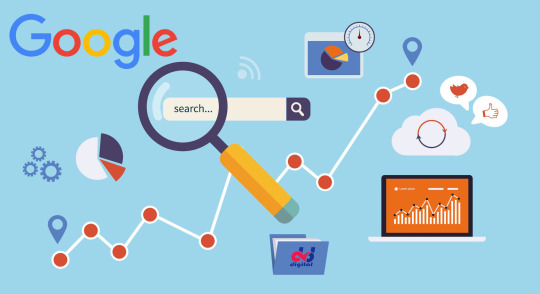
Besides, businesses regularly update their blogs to serve as a form of education to customers, build interest, and ultimately driving sales of products and services. A good example would be Coca-Cola’s news page on its official site.
Not to mention, blogs can remain relevant for a long period of time if the topic being discussed are not outdated. Hence, companies could develop a strong online presence by creating blogs that revolves around a central theme and constantly updating the blogs (i.e., once you created it, customers can always go back for the information). On another note, social media postings are mostly event-based and situational, hence, lose relevance quickly.
Finally, the ‘long-winded’ nature of blogs does come with its benefit of supplementing more content to elaborate a point. Technical topics such as the How to’s, psychological related, medical related etc. requires significant explanations and analysis to be meaningful and valuable.
Sources (Melanie 2019; Yallop 2016)
Enough with the business talks. What about individual blogger? Blogging can be used to generate income. Novak (2020) mentioned that average bloggers can make $200 to $2,500 within their first year of blogging. If a blog is of great hit, blog owners can make money from different monetization strategies such as sponsored posts, advertisement, affiliate marketing, and more.

Moving on, there is a school of thought that blogging is medium for sociality. Bloggers write posts for their readers and people react in hopes of additional correspondence. This attitude is compatible with using a blog to communicate with readers. Another viewpoint is self-expression and gratifications. Micro bloggers write about everyday routine, communicate with other bloggers, provide information, and report news. Self-documenting major life events, building excellent writing habits and style, communicating one's individuality, gaining knowledge, spending time, interacting with others, seeking personal enjoyment, and pursuing professional progress are all motivations to blog. In short, we can see that individuals tend to utilize blogging (or more generally, personal websites) to build their online identities as a means of self-presentation.
Source: (Tan & Teo 2009).

Final thought
After exploring numerous perspectives, I would say that blogs are still relevant at the era of TikTok and Instagram. Blogging and social media postings are inseparable in our daily lives. Blogging not only connects people through the ‘art of language’, but it also serves as a tool for business to scale up their operations, and as a tool for individual to express themselves online.
References
Dennis, MA 2019, ‘blog’, Encyclopedia Britannica online, Encyclopedia Britannica Inc.
Dollarhide, M 2021, ‘Social media: definition, effects, and list of top apps’, Investopedia, 31 August, viewed 12 September, <https://www.investopedia.com/terms/s/social-media.asp>.
Geyser, W 2022, ‘17 social media trends for 2022 and beyond’, Influencer Marketing Hub, 25 May, viewed 12 September, <https://influencermarketinghub.com/social-media-trends/>.
Guberti, M 2013, ‘The difference between blogging and social media’, Marc’s Blog, 31 July, viewed 12 September, <https://marcguberti.com/2013/07/the-difference-between-blogging-and-social-media/>.
Julson, E 2021, Social media vs blogging: which one is best?, The Unconventional RD, viewed 12 September, <https://www.theunconventionalrd.com/social-media-vs-blogging/>.
Melanie, G 2019, ‘Social media posts vs. blog posts: which is better for you?’, ContentWriters.com, 12 December, viewed 12 September, <https://contentwriters.com/blog/social-media-posts-vs-blog-posts-which-is-better-for-you/>.
Milioni, DL & Kyza, EA 2009, ‘How do we study the blogosphere? Research and methods of assessing the impact of blogging on the public sphere’, Proceedings of the International Conference “New Media and Information: Convergences and Divergences”, May 6 – May 9, Athens, Greece, pp. 1-20, viewed 29 September, <https://www.researchgate.net/publication/215611969_How_do_we_study_the_Blogosphere_Research_and_Methods_of_Assessing_the_Impact_of_Blogging_on_the_Public_Sphere>.
Molla, R 2021, ‘Posting less, porting more, and tired of it all: how the pandemic has changed social media’, Vox, 1 March, viewed 12 September, <https://www.vox.com/recode/22295131/social-media-use-pandemic-covid-19-instagram-tiktok>.
Moreno, MA & D’Angelo, J 2019, ‘Social media intervention design: applying and affordances framework’, Journal of Medical Internet Research, vol. 21, no. 3, pp. 1-41, viewed 29 September, <https://www.ncbi.nlm.nih.gov/pmc/articles/PMC6454336/#__ffn_sectitle>.
Novak, J 2020, ‘How much do bloggers make? The surprising answer’, Fit Small Business, 19 May, viewed 12 September, <https://fitsmallbusiness.com/how-much-do-bloggers-make/#:~:text=Writers%20who%20blog%20full%2Dtime,word%E2%80%94beginners%20may%20earn%20less.>.
Staff Blogger 2021, ‘Blogging vs social media: what’s the difference and why blogging is beneficial’, Creative Edge, 27 June, viewed 12 September, <https://creativeedgemediagroup.com/blogging-vs-social-media-whats-the-difference-and-why-blogging-is-beneficial/>.
Soules, M 2022, ‘Jurgen Habermas and the public sphere’, Media Studies, 30 September, viewed 29 September, <https://www.media-studies.ca/articles/habermas.htm>.
Tan, WK & Teo, HH 2009, ‘Blogging to express self and social identities, any one?’, 17th European Conference on Information Systems, ECIS 2009, Verona, Italy, pp. 267-278, viewed 29 September, <https://www.researchgate.net/publication/221407960_Blogging_to_express_self_and_social_identities_any_one>.
Yallop, J 2016, ‘What is more important in enhancing the credibility if a marketing agency, operating a blog or using other forms of social media’, A Roadmap to Digital Marketing, 25 January, viewed 12 September, <https://blogs.brighton.ac.uk/jy40/2016/01/25/what-is-more-important-in-enhancing-the-credibility-of-a-marketing-agency-operating-a-blog-or-using-other-forms-of-social-media/>.
1 note
·
View note